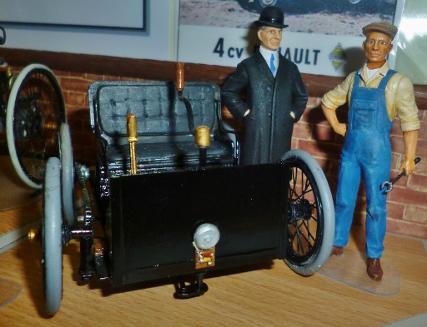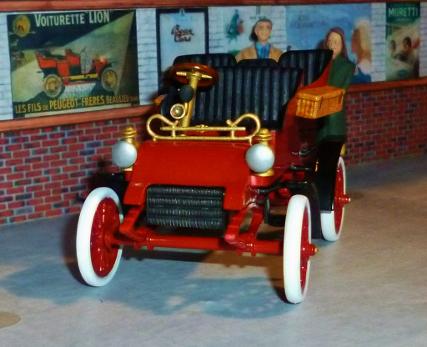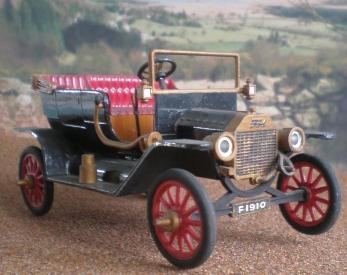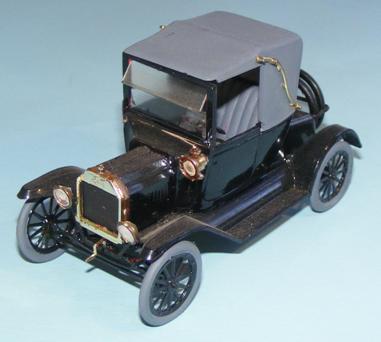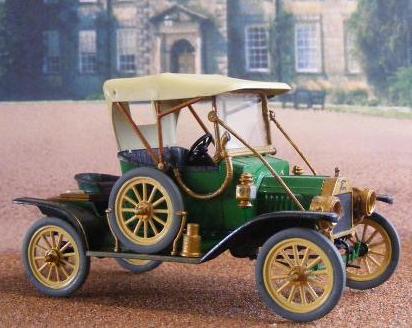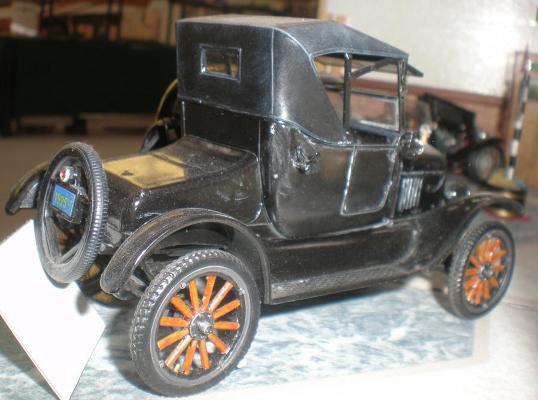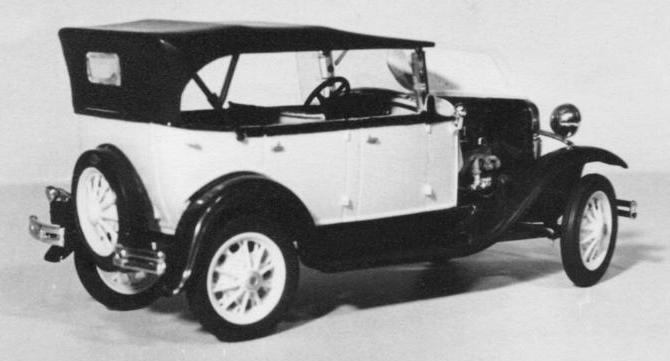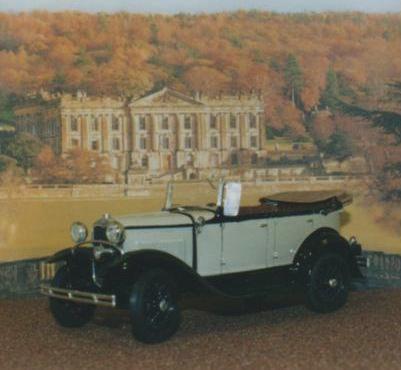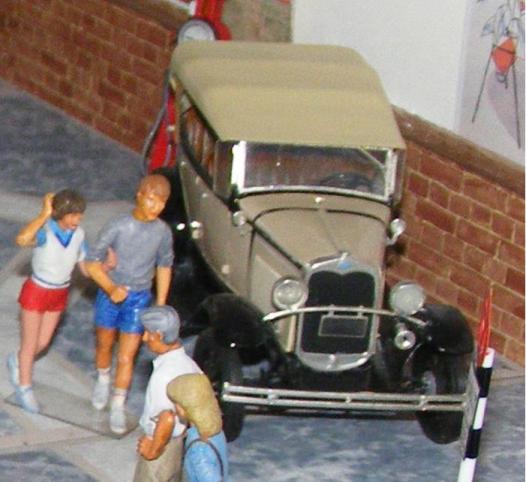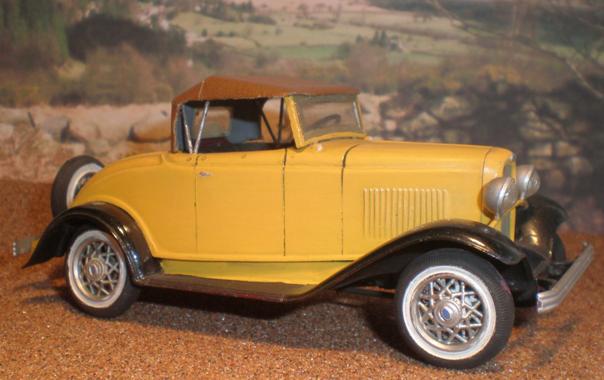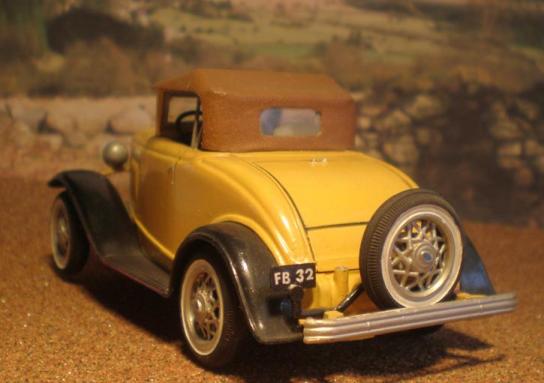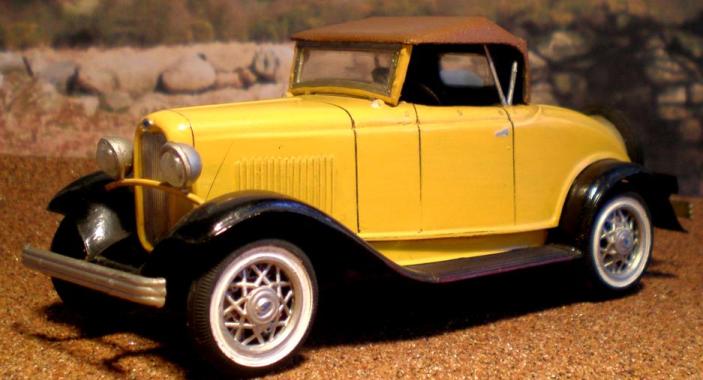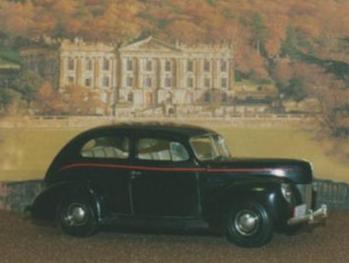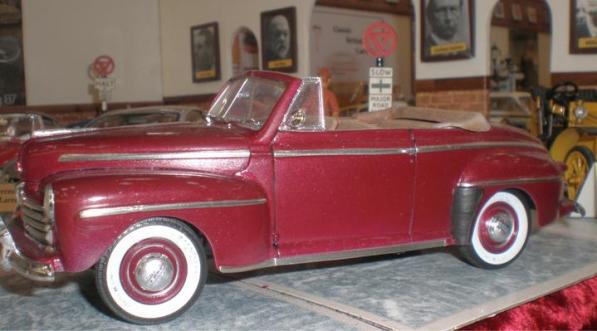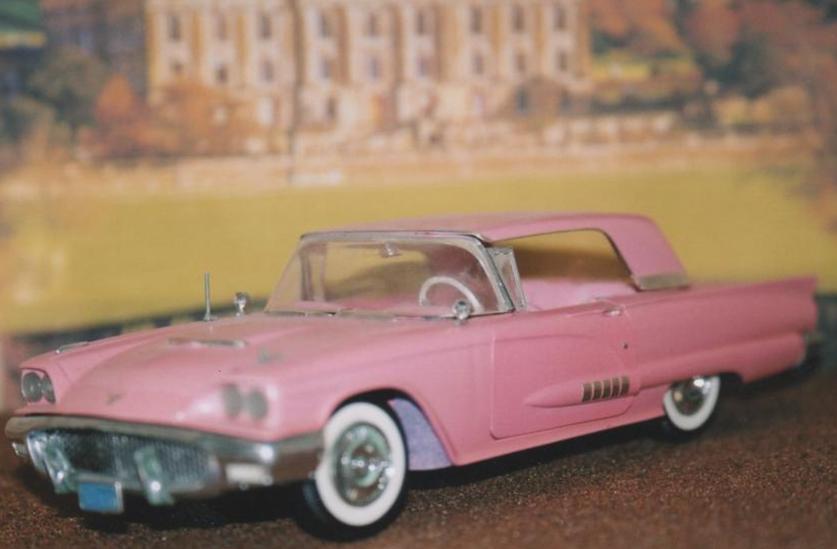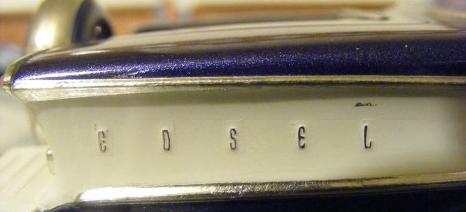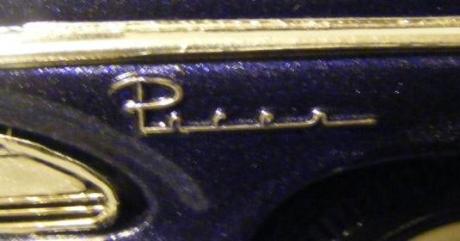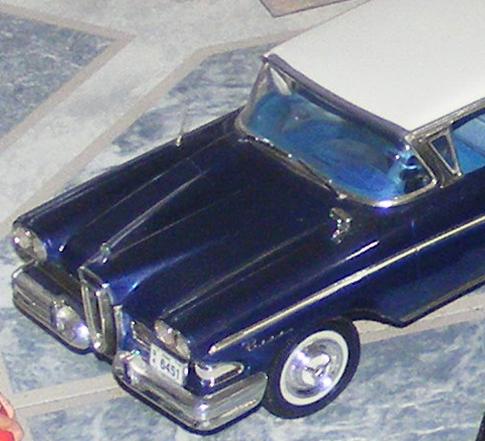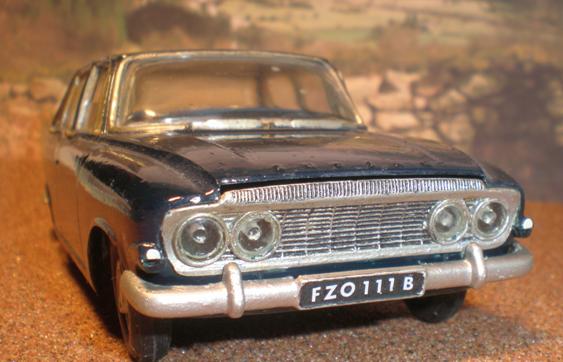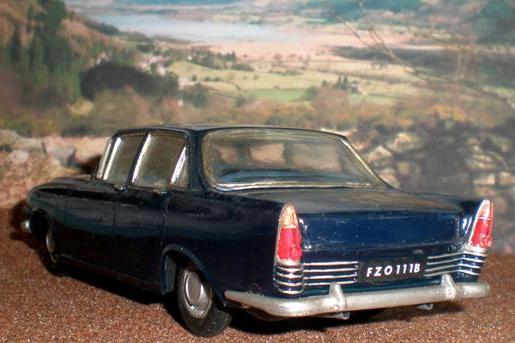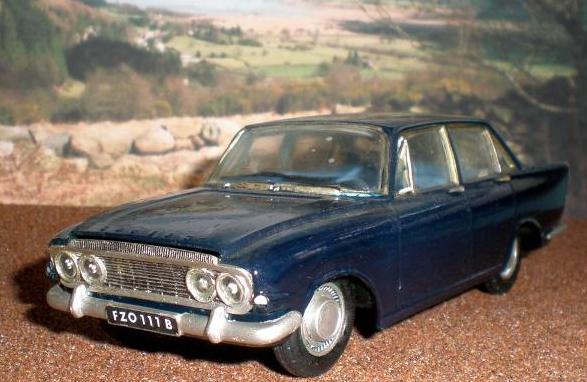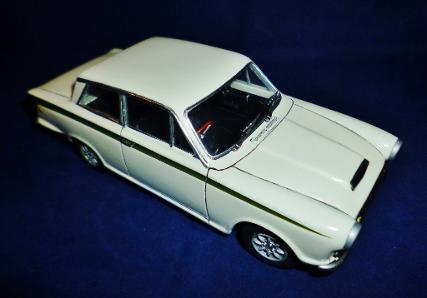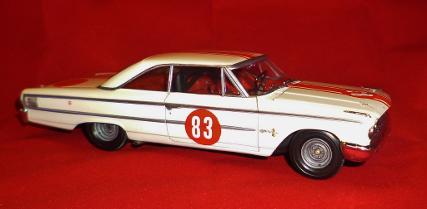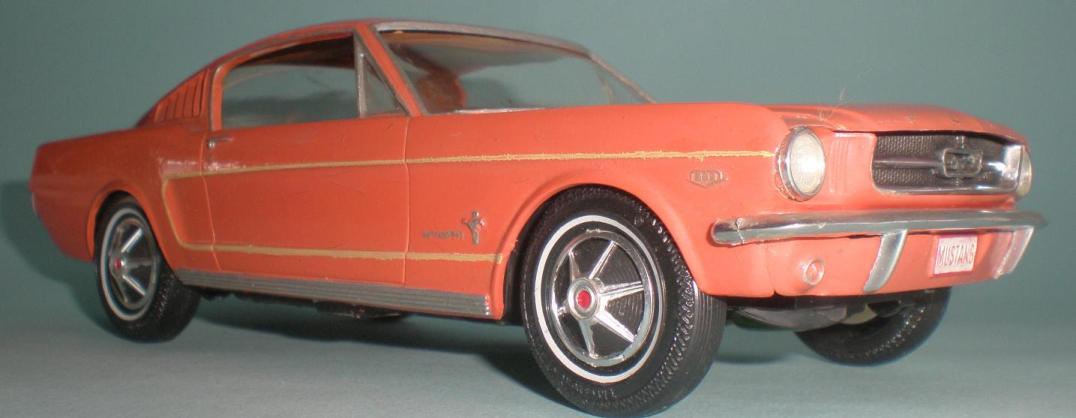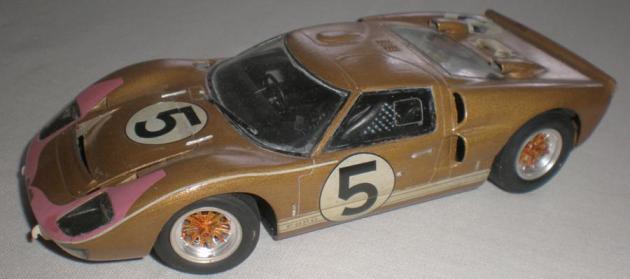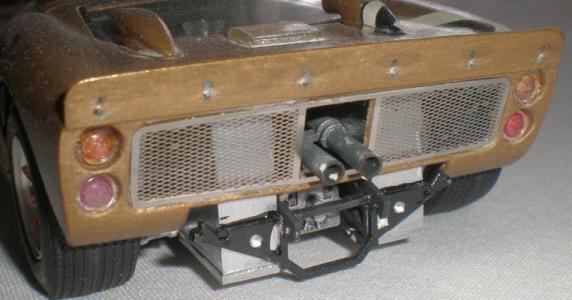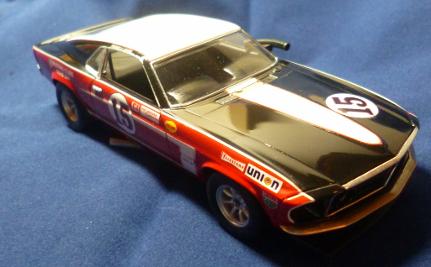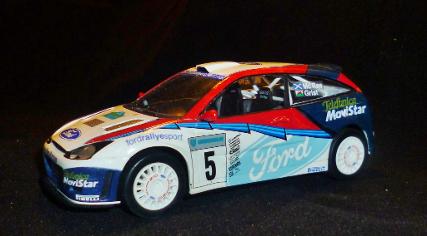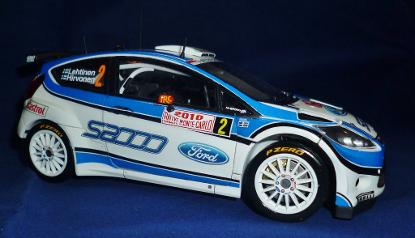The Ford collection
Henry Ford was destined to become one of the greatest industrialists of the 20th Century, completing his first car during 1896, a second car was running by 1899 sufficiently impressing his financiers to form the Detroit Automobile Company. Unfortunately, the cars failed to sell and Fords ideas differed from those of the stockholders, so he left. In June 1903 the Ford Motor Company was incorporated and Henry Ford could concentrate on producing an affordable car for the people. His mission to motorise the world began.
1896 Ford Quadricycle.
In 1893 Henry Ford was 30 years old and working as Thomas Edison's Chief Engineer at the later's company, ”the Edison Illuminating Company”, Detroit, Michigan. Fellow engineer, Charles King, recalls that Ford saw an “American Machinist magazine” article on the gasoline engine in it's November 1895 issue and Ford said "I want to build one of these." Being thoroughly conversant in the intricacies of steam engines and combustion Ford certainly able to do so.
Henry Ford was one of those people who excelled in getting others enthusiastic about his plans and used his circle of engineering friends, including Charles King, Jim Bishop, George Cato, Edward (Spider) Huff, and David Bell, to build his first car; the Quadricycle.
The first production model from the new Ford Motor Co. was, predictably, the Model ‘A’. If it bears a striking resemblance to the first Cadillac model it is because, to all intents and purposes, it is the same car, but with a different engine.
A significant landmark in motoring history occurred on the 1st October 1908, the day Ford launched the Model T. For the sake of economy all other models were dropped. Gradually as the gamble paid off and the demand grew, the methods necessary for mass-production were applied to the new car.
They were not new, having been applied in America to guns, watches and to motor cars by Henry Leland of Cadillac who had already preached and practised parts standardisation and inter-changeability thanks to precision in manufacture. The precision was achieved by the development of specialised machine tools.
Fords Detroit factory was, at that time, the largest and most modern in the world. The company soon reaped the rewards for its efficiency and low unit costs and Ford began cutting his prices. In 1911 a Touring model cost $950, but by 1925 it was down to just $290, yet Ford still averaged $50 profit per car.
By 1926 Model 'T' sales were flagging. As road conditions improved, customers wanted refinement and comfort rather than unsophisticated ruggedness. Ford could not accept that times were changing. However, even he could not ignore falling sales, and Model T production finally ended in 1927.
.....but that was not the end for the 'T'. Many of them continued to carry on productive lives long into the later half of the 20th. century, not always as family cars or work horses but as entertainment for young men, and nowadays as projects for restorers.
When "Dad" got a newer bigger car, "Son" often got the old family 'T' as a hand-me-down and many were turned into speedsters with one off, home made bodies which the youngsters would tear around the local country side in.
A few were taken in hand and given proper race upgrades, not just for dirt track racing but for Indy too!
This 1/24th scale Speedster, of 1919 vintage, was scratchbuilt.
The ‘A’ was the much awaited, entirely new car, to replace the model T. It appeared on 2nd. December, 1927. If people expected the A to be revolutionary, they were disappointed.
The A was simple and sensible and prices started at $385. Henry was loath to give up his beloved transverse springs, and the A still sat up high on its chassis to give it a 9 ½ inch ground clearance. Rural buyers were still on Henry Fords mind.
A model A was supposed to reach 60 mph - quick for a cheap car in the late 20’s, but its four-wheel brakes were pretty awful.
Some 4,500,000 A’s were sold before the model was replaced by the model B.
After the Model “A” came the Model “B”. This was a car which was designed to take the world by storm, but the Model “B” was in production for only ten months and was something of a flop for Ford, although the reason was not that it was a bad car but that Ford was getting to grips with a whole new technology; there were no examples to follow and everything had to be thought out and tried from scratch.
1932 Ford Model B . 1/32nd scale Pyro kit.
Although the Model “B” failed to live up to the expectations of either Henry Ford or his potential customers, there can be no doubt that it was, eventually, an excellent car.
With the timing all wrong from beginning to end, it was eventually killed off by the Depression rather than by its own shortcomings.
1936-37 Ford V-8 5-light Coupe.
Ford's second 'Great car' was the flat head V8 range of the 1930's. A converntional chassis was outshone by the new engine which set new standards for the day.
Detroit already had V8 engines in Cadillacs and straight-8s in Buicks, but never before had an 8 cylinder engine been fitted to a lower priced car.
1.25th scale AMT/ERTL kit
The famous ‘Turtle Back’ design made its debut in 1939. The more streamlined look appealed to American car enthusiasts and in its day it was considered fast, lightweight and equipped with precision steering. It had a sound reputation for dependability.
The Deluxe came equipped with bumpers & bumper guards, twin electric air horns, two tail lamps, foot-controlled headlight beams, single control tandem-action windshield wipers, a finger-tip gear shift mounted on the steering column, illuminated instrument panel, a cigar lighter, ash trays, arm rests, foot rests, swivel- type sun visors and a glove compartment complete with lock and a clock!
1940 Ford V8 Turtleback.
1/24th scale AMT kit.
1942 Type 21A Deluxe
The 1942 model range saw Ford redesign the Super Deluxe range. The new series of convertibles, sedans, coupes and station wagons, know as the type 21 deluxe range and released from September 1941, sported bright work around the windows, new wings (fenders), grille with repositioned rear lights. It was a most handsome car.
World war two put a damper on car sales and by February ’42 civilian car production had ceased. Ford did find a market for their new cars amongst the armed forces of several countries, most notably of course Britain and the U.S.A.
1/72nd Scale ACE kit.
This next car marked the end of an era! The distinctive ‘fat’ fenders of the 1948 Ford disappeared into the slab sided ‘shoe box’ shape of the 1949 car, never to be seen again.
The ‘48 Convertible clearly showed it’s family resemblance but was aimed at an entirely different market. Ford’s market research often seemed to coincide with their economic theories, the companies ability to provide the same car in different guises appealed to a wide prospective clientele while costs, through standardization, remained low.
Cost issues were obviously important post war but so was styling. From 1949 Fords styling cues changed dramatically, the wood-sided Sportsman convertible would end 1948 with just 28 units having been built.
Converted from the same Revell-Monogram kit.
1948 Ford. ‘Woody’ 1/25th scale Revell-Monogram kit.
An Estate car, or Shooting Brake, or Ranch Wagon? in the USA this body style is known as a ‘WOODY’.
Ford had dominated the performance areas of the auto market for decades, but they had never made anything which could truly be described as a sports car.
After WWII the level of European 2seaters available in the USA began to increase. Their popularity was in part because returning servicemen had experienced the nimble European chassis designs at first hand and now were looking for them at home. The growing demand for 2seaters was becoming more and more evident. Fords 2seat Thunderbird is traditionally seen as a reply to the Corvette since it appeared two years later, but it had actually been on the drawing board since the early 50’s and the Corvette just pushed the project into sheet metal.
A clear indication that Ford market research had identified the requirements of the US market more closely than GM was the specification of the Thunderbird. The ‘T’bird outsold the Corvette from day one, and it did it on a specification that was far higher and just what the sporty motorist wanted.
1958 Ford Thunderbird. 1/24th scale monogram kit.
Named after Henry Ford’s son the "Edsel" was designed some years after his early death. It was remarkable in being the first automobile project to be based entirely upon the results of market research governing the design from grille to tail pipe. The resultant motor car, was, however, a commercial lemon and at $350 million the most costly mistake ever made by the Ford motor company. The radiator grille was unique, being a completely vertical motif; the tail-lights were unkindly likened to in-growing toenails, while the extent of body overhang was horrendous. But underneath it all lay a strong well-engineered chassis, while the range of engines fitted during the two years of production included some of the most powerful in the USA – The Edsel wasn’t the worst automobile in American history, but it will certainly be remembered as an object lesson in how not to design for the market by remote control.
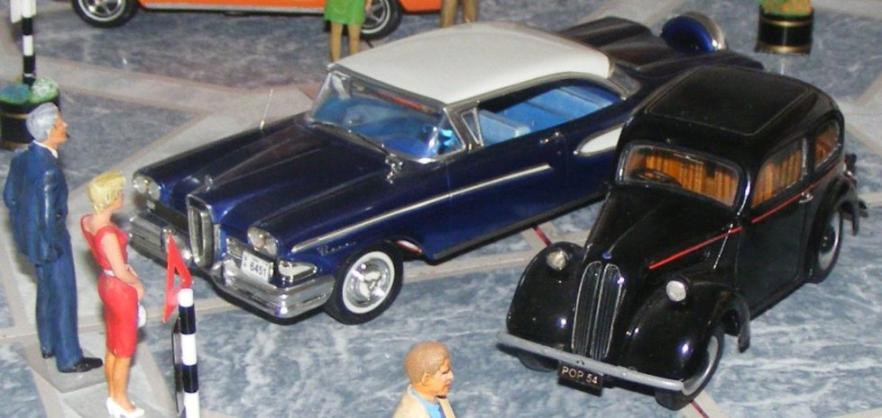
1958 Ford Edsel Pacer. 1/25th scale AMT/ERTL kit. 1953 Ford Popular. 1/25th conversion of Revell street rod kit.
British Fords have often become iconic and our next car still lives in the memories of many who grew up in early 1960s Great Britain.
The Zephyr and Zephyr-Zodiacs were built in the UK from 1950 to 1976 in three series. From 1962 the Mk III versions were offered in both four- and six-cylinder versions. The Zephyr-Zodiac was the top of the range featuring a more luxurious interior with better rear visibility, a full width grill sporting 4 headlights and more powerful 6cyl. engine.
They were Ford UKs largest passenger cars until they were replaced by the even larger Consuls and Granada’s in 1971. The Zephyr was popular with many people due to its regular appearance in a popular TV program "Z Cars".
1962 Ford Zodiac Mk III. 1/32nd scale Airfix Kit.
One of the fastest selling cars in the history of the British motor industry the deceptively orthodox Cortina was the first of a line that endured until 1982.
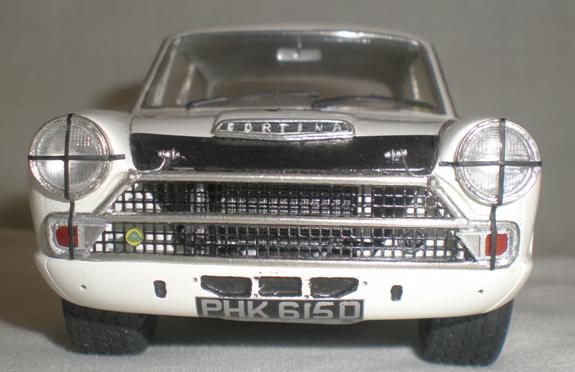
1963 Ford Lotus Cortina. 1/32nd Airfix kit.
Outwardly a lively, well-mannered family saloon, it spawned two potent derivatives, both of which appeared in 1963. The GT was mechanically closely related to the standard car, but the exciting Lotus Cortina was powered by a Lotus tuned Ford-based engine and was capable of speeds in excess of 105 mph.
The Cortina is regarded as a copybook exercise in engineering and, above all, product planning. Very late in the cars evolution it was named ‘Cortina’, on account of the 1960 Winter Olympics being held at Cortina d’Amezzo in the Italian Alps. This was a reflection of the fact that Ford was also looking to export it to Europe.
In road form, the engine was rated at 105 bhp but in Lotus’s race tuned engine there was 145 bhp. The transmission & excellent four-speed gearbox, comprised of components modified by Colin Chapman at Lotus, who was allowed to undertake more than just an engine transplant. Still potent racers on the historic circuit anyone who owned, and then sold, one of these cars, really wishes they still had it!
Mean while back in the U.S. Ford had started on it's 'Total Performance' crusade which included an assault upon the NASCAR title with the Holman & Moody developed Ford Galaxie 500 ‘R-Code’ Lightweight NASCAR. Although Ford commissioned approximately 210 ‘Lightweight’ ‘R-Code’ Galaxy 500s only three ever went across the compete in the British Saloon Car Campionship, now know as BTCC.
Continuing it's 'Total Performance' crusade Ford released one of Americas best know “muscle” car ranges in 1964. Ford America presented the Mustang, which was destined to become one of the fastest selling cars in the history of the US motor industry. The Mustang name remains with us to this very day.
1964 Ford Mustang. 1/25th scale monogram kit.
In the early 1960’s Ford shook off its entrenched, staid approach to car design and embraced a new policy under the 'Total Performance' banner. As part of this strategy, the company decided it must win the Le Mans 24 Hours race. After failing to buy Ferrari Ford turned to Lola & the Anglo-American derived GT40 gave Ford four victories in a row at the Sarthe circuit between 1966 and 1969.
Ford Were not happy to beat Ferrari in sports cars alone and took the step into F1 backing Cosworths new DFV engine. A unit that became a must have part of any privateers arsenal for over a decade.
Starting at the 1967 Dutch GP at Zandvort with a debute win and taking the world drivers with Graham Hill the year after. The winning didn't stop till Michele Alboreto took the DFV's last F1 win in a Tyrrell at the 1983 Detroit GP.
1968 Lotus 49b.
1/24th scale Heller kit.
Back in the U.S. Ford's racey image was being upheld in the 'Trans-Am' series were it battled with Chevrolet for the title honours, and in 1970 the Mustang Boss 302 did them proud.
1969 Ford Mustang Boss 302 'Trans-Am'
1/32nd scale Hornby kit.
Ford's Mustang reached it's 50 year anniversary in 2014 and many people are looking back over the range that has not only been a popular car on the roads but also a star of the screen and the track.
One of the track stars was the Boss 302, introduced in 1969. It won the first round of the Trans-Am series that year but ultimately fell short of the goal that year. In 1970 Parnelli Jones took the Bud Moore engineering team to the Trans-Am title and the Boss 302 took its place in history.
1973 Ford Capri.
‘The car you always promised yourself’’ – well that’s what Ford said when they introduced the Capri, the European version of the Mustang, Ford’s run-away success in America. This was the Grand Tourer for everyman. The Capri was remarkably enduring being built by Ford in Britain and in Germany (from 1976 on in Germany only). When production ceased in 1987 1.8 million had been built.
Built more or less straight from the box, the 1/24th scale Doyusha kit is the only road Capri body shell available.
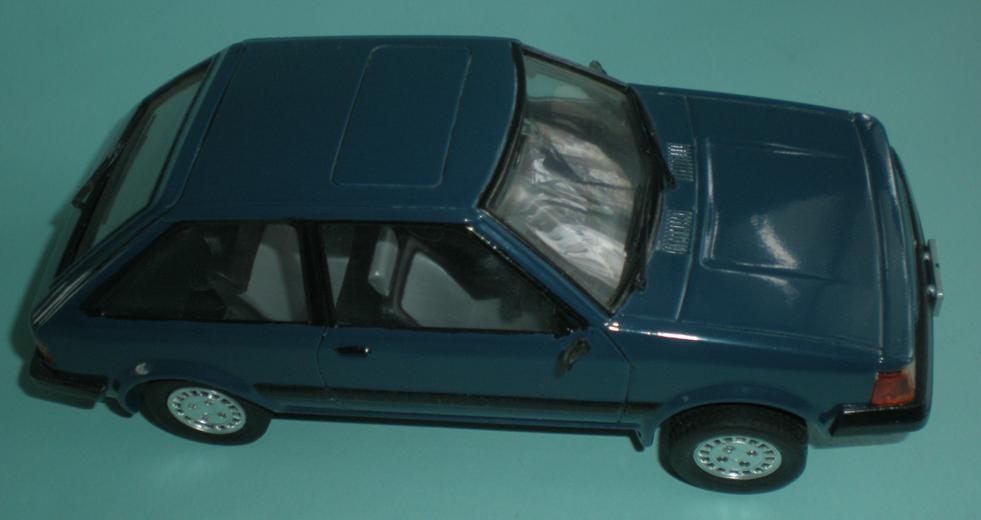
1980 Ford Escort XR3 .
The front wheel drive Escort was the first Ford car distributed world wide under the same model description.
Production of the MKIII body style commenced in July 1980. Ford invested some 2 million DM in this project. The outstanding styling feature of this model was the notchback shape.
The 1.6 litre engine allowed the sporty XR3 to accelerate to 60 mph in 9.7 seconds. Maximum speed was 115 mph.
1/24th scale Airfix kit .
Ford Fiesta MKII.
The MKII Fiesta appeared late in 1983. Externally it was not much more than a mild facelift of the MKI, having a smoother front end more like the Sierra, but the interior was all-new. Available with the options of petrol or diesel engines, manual or automatic gearboxes and a very sporty XR2 package, with the 1.6ltr engine previously used on the XR3 Escort models. The Fiesta was a best seller in the UK and also popular in Europe until the end of the 1980’s when it could no longer compete with the more modern Peugeot 205, especially in the hot hatch market.
1/24th scale kit.
Although the DFV engine was superceded by the Turbo era Ford did still provide power in F1 and their cars were also pace setters in the Rally world.
Having powered many independent teams like Tyrrel and Benetton Ford works supported the Stewart F1 team for three seasons, 1997-99, before buying the team and entereing as a full works team under the Jaguar name. Fords record in F1 is second only to Ferrari, when the Jaguar team folded at the end of 2004 Ford Power had accrued 176 wins, been in 524 races and had 139 pole positions.
Ford's involvement in Nascar is long and impressive. From 1998 the Taurus took over fron the Thunderbird as Fords weapon of choice and has itself been a winning car. Tauruses have won three Winston Cup championships and two Busch Series championships.
Our model is the car sponsored by the Cartoon network and driven by Jerry Nadeau.
1998 Ford Taurus NASCAR. 1/24th scale Revell kit.
Ford continue to be one of the worlds top automobile manufacturers and we are sure to add more of the famous cars in years to come.
In 1999 Ford Europe and the British-based M-Sport firm combined to build a new car, the Focus RS (meaning Rallye Sport). It was based on the 2-litre Focus Climate production car, although the road car the competition variant share little in common beyond a similarity in looks. To meet the FIA specifications, and be competitive, the standard hatchback needed every aspect of its design to be reviewed.
Development continued over the next few seasons. In time the Focus RS would win Drivers championships and 44 rallies.
2010 Ford Fiesta S2000
1/24th scale Belkits kit.
The Super 2000 challenge series in Rallying and touring cars was part of the FIA's push to reduce the costs of motor sport. Ford/M-sport's Fiesta S2000 went from the drawing board to running in a rally stage in just nine months and not only suited the then current S2000 and IRC regulations but was expected to form the basis of Ford's WRC challenge in the coming years, which it did.
The Fiesta S2000's competition debut was at the 2010 Monte-Carlo Rally in January of that year, and it led from start to finish. M-Sport went on to deliver 22 Ford Fiesta S2000 rally cars to customers as far flung as Finland, the Czech Republic, Ireland, Spain, South Africa, Poland, Portugal, Abu Dhabi and Italy.
